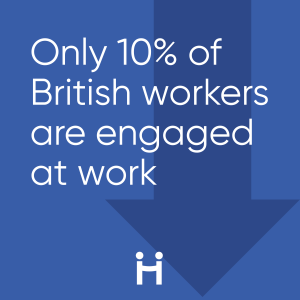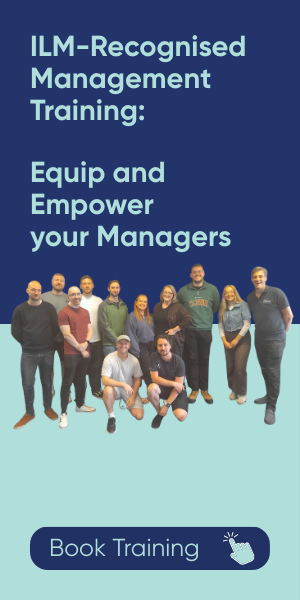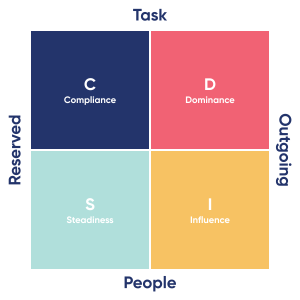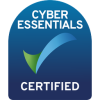Building trust and engagement: Why it matters for your business
We work with leaders every day who want to get the very best from their teams. But here’s the thing: you can’t have great performance without great engagement, and you can’t have great engagement without trust.
David Bowes, Head of People at Insights Learning and Development, recently shared some powerful insights at CIPDs Festival of Work, on how organisations can intentionally build trust to improve retention, boost performance, and create workplaces where people thrive. Here’s what business owners and managers need to know.
Trust and engagement is the foundation of high performance teams
Trust isn’t a “nice-to-have” – it’s what fundamentally allows your employees to feel safe enough to speak up, share ideas, and bring their true selves to work.
Meanwhile, engagement is more than just job satisfaction. Research from Utrecht University describes it as a psychological state of vigor, dedication, and absorption:
Vigor: high energy and resilience.
Dedication: enthusiasm and pride in work.
Absorption: focus and clarity that drives results.
When your business has both trust and engagement in place, employees willingly go the extra mile, referred to as discretionary effort. This very thing is what fuels growth, productivity and ultimately an increase in profits for your business.
Why does trust actually matter for your business?
We know workplace dynamics have shifted post-covid – but what can you do as a business to keep up?
Gen Z employees are seeking more purpose-driven work, hybrid and remote work models have become the norm, and many managers are feeling the pressure with more than 50% being burnt out (Gallup). Actively engaged workers is as low as 13% in Europe, with the UK suffering even more, with only 10% being engaged at work!
For business leaders, this is both a challenge and an opportunity. Teams that trust their leaders and understand where the business is heading are more likely to stay, perform, and innovate, even in times of economic or political uncertainty. Measuring trust and engagement regularly can give you a vital pulse check on the health of your culture and stop issues before they turn into retention problems.

So, how can you start building trust in your workplace?
Bowes suggests some core strategies that your business can adopt – strategies that Howarths help to embed as part of business culture through regular training and reinforcement:
Clear and Transparent Communication: Be transparent, even with difficult conversations. Share information openly where possible and treat people like adults. This builds a sense of ownership and credibility.
Be Visible: Walking the floor, hosting regular check-ins, creating informal opportunities to connect are all ways in which your managers can become more visible. People trust leaders they can see and speak to.
Remove Barriers: Remove layers in the hierarchy that slows things down, making decision making more clear. People who feel included are more engaged.
Empower Your Leaders: Equip managers to make decisions confidently. Empowered managers inspire trust in their teams and create faster, more adaptable organisations.
Critically, it comes down to training. How adept are your managers at being able to manage time effectively, motivate individuals, develop team dynamics, give feedback to improve performance, have difficult conversations? These are just some of the areas covered in ILM recognised management training.
These aren’t one-off initiatives. They’re lasting habits that should be built into your company culture.


Trust shouldn't only be built in focussed areas of the business
Bowes continues: trust can’t stay isolated in one department or location. For growing businesses with multiple sites or remote teams, it’s crucial to connect people across regions and functions.
Create opportunities for people to collaborate beyond their immediate team, whether that’s through cross-functional projects, company-wide events, or even inviting customers to collaborate on problem-solving sessions.
Investing in relationships. Fly people in to meet face-to-face when budgets allow. These are the kind of things that pay off in better collaboration, stronger ideas, and a workforce that feels genuinely connected to the organisation.
Being self-aware and actively listening is the human side to trust
Finally, trust starts with self-awareness. Leaders who understand their own communication style, strengths, and blind spots will be more agile and adaptable. DISC profiles, coupled with an expert HR and Engagement team helps you understand what it means, can create a shared language and allow an understanding of everyone’s preferences.
Active listening is just as critical. Rushing to give instructions or share opinions can decrease trust and make people feel excluded. Instead, ask clarifying questions, invite input, and make space for all voices to be heard.

Book our HR Advisors to run DISC profiles for your organisation. Start by understanding.
The desired outcome of building trust
Building trust is deliberate and intentional. It doesn’t just “happen,” but when you invest in it, the payoff is significant: better engagement, lower turnover, and higher performance.
Simply put, if you want employees to trust you, start by trusting them. Communicate openly, empower your managers, and create opportunities for connection.
The result? A workplace where people feel valued, motivated, and ready to go the extra mile for your business.


